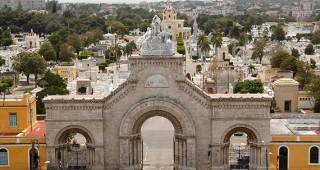With Brother Tomás Linares del Castillo as its first rector, the first university in Cuba, the Real y Pontificia Universidad de San Gerónimo de La Habana, was created in 1728. After several reforms, the university became a lay institution, changing its name to Real y Literaria Universidad de La Habana. Scientific studies gained importance during that time, making an impact on students such as Carlos Manuel de Céspedes, the Father of the Homeland; historian Antonio Bachiller y Morales; Felipe Poey, founder of the Real Academia de Ciencias Médicas; and economist and lawyer Francisco de Arango y Parreño, as well as on the thinking of the time in general. It was only after Cuba was free from Spain that it became the Universidad de la Habana.
The construction of the Aula Magna, the main lecture hall designed by architect Emilio Heredia, began in 1906 and was completed in 1911; however, the construction of the different schools and other buildings in what is known as Colina Universitaria (or University Hill), spread out for several decades. Despite its prolonged construction period, it is noteworthy that coherence was maintained, although it was unfortunately affected in the 1960s with the addition of a number of new constructions. These new buildings were non-harmonious or even aggressive towards an environment that had been conceived with neoclassic elegance and monumentality. The dominant feature in the only higher education institution that existed in Cuba at the time was an eclectic historicism, lavish in columns, cornices and other classical elements, which were integrated in a group of buildings that are linked inwards by a central plaza, small squares and green areas. Declared National Monument, this walled complex includes an 88-step outside staircase and a central square. Additionally, it also boasts impressive works of art, such as the sculpture of the Alma Mater by Yugoslavian artist Mario Korbel, the seven murals by Armando Menocal in the Aula Magna and the gabled portico of the Rector’s Office.
In addition, some of Cuba’s most notable teachers have worked at this university, including Enrique José Varona, Luis de Soto, Vicentina Antuña, Mirta Aguirre and Hortensia Pichardo.








 Eclectic
Eclectic




